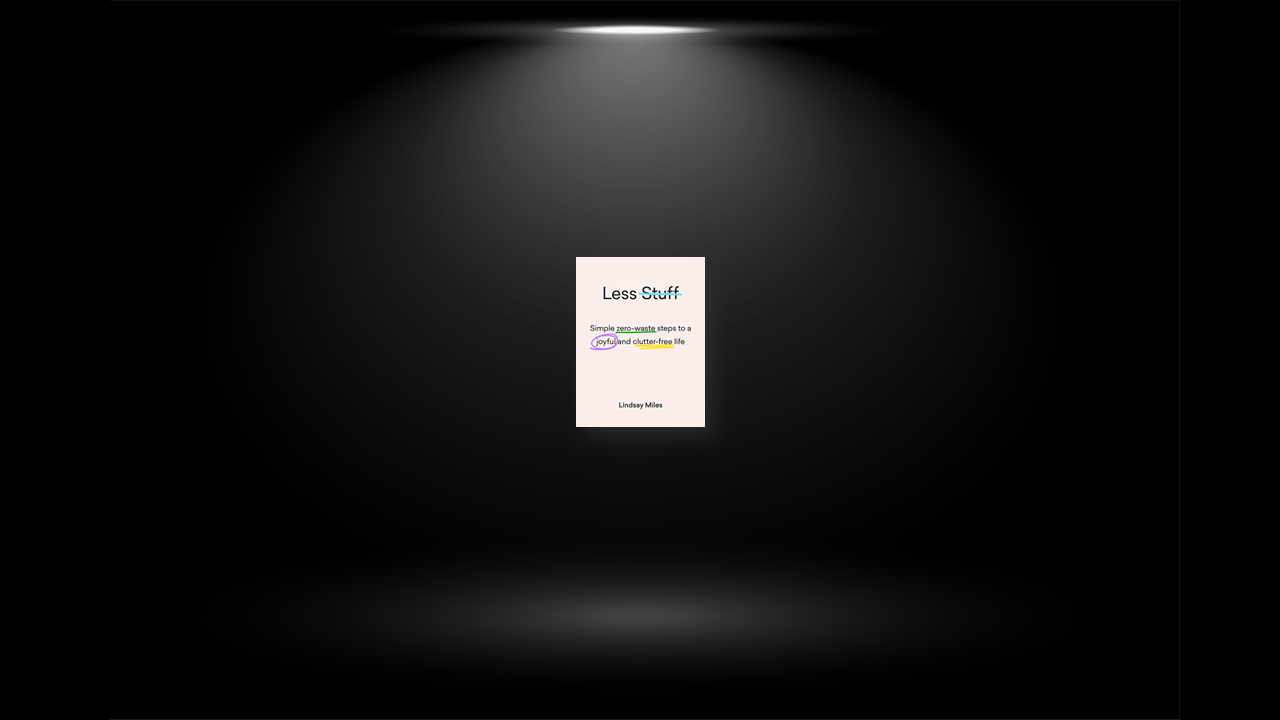Zero Waste vs Minimalism
Zero waste and minimalism: are they really that different? I don’t think so. At the heart of both is the idea of intentional living. Realising what we truly need, making do and choosing well. Being mindful, making conscious choices and living life with purpose. Two sides of the same coin. Of course, you can aspire to one lifestyle but not the other. There are plenty of people passionate about zero waste who are not minimalists, and many minimalists who do not live a zero-waste lifestyle.
You can be zero waste, you can be minimalist, you can be both… and you can be neither. When it comes to labels, some of us love them, and some of us don’t. If you’re a fan of moderation and these labels just seem too extreme for you, don’t use them. This isn’t about striving for perfection. It’s about doing the best we can. You can know you have too much stuff and want to have less, without wanting to call yourself a minimalist. You can be keen to recycle more, and send less to landfill, without wanting to do away with your rubbish bin entirely and be zero waste.
We all have our own version of enough. Find yours. It doesn’t matter what anybody else’s looks like, nor what they call it. This is about you, your stuff, your relationship to your stuff, and how you’re going to change that for the better.
Overcoming the Scarcity Mindset
Simply put, a scarcity mindset is the belief that there will never be ‘enough’. When it comes to decluttering, holding on to stuff can be the result of a scarcity mindset. We might realise that we have too much stuff, but we don’t want to reach the point of having too little stuff.
How do we know what ‘enough’ actually is? The truth is, we don’t – not until we start letting go of what we no longer need. This is how we find out how much (or how little) we really do need.
The scarcity mindset and the fear we feel when we let go of things that we might actually need later limits how much we will declutter. The question is whether the fear is justified in some way, or an excuse to hold on to something. Overcoming the scarcity mindset isn’t about ‘feeling the fear and doing it anyway’ – in some cases the fear of decluttering an item may be entirely logical. When we declutter we simply need to be practical and realistic about our own situation. What ‘enough’ looks like for each of us will be different.
Buying stuff is easy. Decluttering stuff is harder. We’ve got the ‘buying stuff’ habit nailed; we don’t need any more practice at that. The ‘letting go of stuff’ habit – that’s the one we need to work on. The need to feel like we are making progress can be met with the act of buying stuff. Alas, it is the opposite of progress. If decluttering is something you struggle with, and you know you have a hard time letting things go, why would you consider buying more stuff as a solution?
Feeling like we are making progress is not the same as making progress. We can’t buy our way to less stuff. We can’t organise our way to less stuff. The only way we will make progress with decluttering is by actually letting stuff go. More storage is not the answer to too much stuff. Less stuff is the answer to too much stuff.
It’s a Marathon, Not a Sprint
If you don’t have much stuff to start with, you’re ruthless in your approach, completely determined, keen to put the rest of your life on hold as you tackle this challenge, and you’re happy to take action fast with the things you no longer need, you’ll be able to progress fairly quickly. If you have a lot of stuff to work through and prefer a more considered approach, taking the time to find the absolute best new homes for your unwanted items, the journey will take a lot longer.
Don’t underestimate the time you will need. Decluttering your home of everything you no longer love or need is not a process that you will complete in a single afternoon. Keeping spaces clutter-free is not a case of tidying the whole house and thinking, ‘Right, I’m never letting it get messy again!’
It’s not a job that you’ll finish in a week or two, either. As a minimum, you’ll likely need to allow yourself six months to tackle everything. If you’re just starting out on your journey, it’s probable that you will need a lot longer.
This is possibly not what you want to hear. We live in an age where everything moves so fast, and we’re used to quick fixes and corner-cutting life hacks and instant results. We can visualise the end result already, and we want to get there as quickly as possible. It’s not enough to just know the goal. We have to do the work.
Dealing with Other People (and Their Stuff)
Now you’ve committed to decluttering your home, it’s a good idea to tell other people. While it can be tempting to go it alone, especially if you’re worried that you won’t get the results you want or the support you’d like, there are a couple of good reasons for sharing what you’re about to do.
First, there’s nothing like declaring your intentions to the world to encourage action. Nobody wants to look like a flake, so tell everyone what you’re going to do – it makes everything feel more real, and there will be far more incentive for you to do it! Not only that, but the people you tell will keep you accountable. They will ask you how it’s going and, believe me, it feels far better to report back in the affirmative!
Second, if you’re lucky, people will be super supportive. At the other end of the scale, they might tell you that it’s a ridiculous idea and you’re wasting your time (hopefully not, but families and friends can be a little outspoken sometimes). Whatever they say, remember that this is your journey. You don’t need permission, and it doesn’t matter what anyone else thinks. Turn any negative energy around and use it to your advantage – as an extra incentive for proving the naysayers wrong!
Don’t make the mistake of treating support or enthusiasm from others as a desire to actually join in. They may think it’s a great idea but not be at the stage of the journey where they are ready to take action themselves. Bear in mind too, they might be using the opportunity to encourage getting rid of your stuff, not deal with their own. Be wary of tackling your stuff together: they probably won’t feel the same way as you about your childhood toys or Grandma’s heirloom crockery. If they really want to join in, it will likely work better if they deal with their own stuff, and you deal with yours.
Beginning Before We Begin
Set some time aside to walk through your home, room by room. Notice if the room feels cluttered, or crowded, or open. Look at the stuff you have in each room. Try to remember the last time you noticed or used these items. Ask yourself how you feel as you look around the room. Do you feel stressed or calm, indifferent or pleased? Think about how you’d like the room to be. How would you like it to look, and be used, and how would you like it to feel?
Imagine how you’d like it to be when you are finished. Get clear on what you are working towards. Thinking about how we use our spaces helps us determine what things we need. This sounds obvious, but too often we fill rooms with furniture and ‘stuff’ just because that’s what everybody else does. We don’t take the time to think about how we use the space, and what is appropriate for us.
The other side to that is whether you are happy with the way the room is used now. Would you prefer it to be used differently? What prevents that from happening? We’ll come back to this idea throughout the decluttering process.
During this step, don’t make any judgements. Try to remove yourself from the situation. Imagine you are walking through a stranger’s home, or that you are a fly on the wall. Be objective. This is not about forming opinions, wishing things were different, or lambasting yourself for things done or choices made in the past. We cannot change the past, and that doesn’t matter. We are in control of the present, and that is what determines our future.
Try not to feel overwhelmed. You can do this! There is no rush, and it is not a competition. Remember that you will learn so much through the process and the journey, and the most sustainable outcomes are the ones that take time. Own the situation. Remind yourself why you’re doing it. See the opportunity to grow. Embrace the challenge.
Even if your initial walk through your home identified only a few items to release, or just a single one, then you are already on your way. You have begun the journey. You’ve taken your first step towards a life with less. The path to change is through a series of small steps, one after the other. Keep going, and you will get there.
Believe it is possible.


